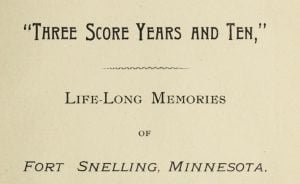Fort Snelling, Minnesota
Established in 1819, Fort Snelling is located at the confluence of the Minnesota and Mississippi Rivers, near St. Paul, Minnesota. Originally a remote U.S. western outpost, the fort lies in a naturally beautiful area close to the Falls of Minnehaha and Bridal Veil Falls, attracting many visitors annually. It occupies a strategic position at the rivers’ junction, atop a 300-feet high bluff. The site, chosen initially by Lieutenant Z.M. Pike in 1805 following negotiations with the Sioux, didn’t commence construction until 1820 under Colonel Snelling’s oversight, completing in 1822. Initially named Fort St. Anthony, it was renamed Fort Snelling in 1824. Evolving from log huts to modern barracks, the fort served as a military and cultural hub, notably during the Civil War and the 1862 Sioux outbreak, helping shape the surrounding regions, including what later became St. Paul.


